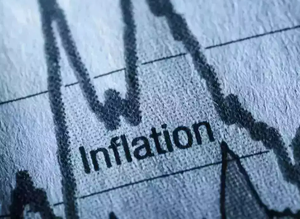Mumbai: The Reserve Bank’s efforts are focused on keeping the inflation horse under a “tight leash”, Governor Shaktikanta Das said Friday as the central bank opted for a status quo in policy rates for the 11th consecutive time, belying voices demanding a rate cut to support growth.
The balance between inflation and growth has gotten “unsettled”, Das said, referring to the lower-than-expected 5.4 per cent GDP expansion and price rise shooting beyond 6 per cent for October, and added that all the instruments will be deployed to get it back.
Das, whose current term as the central bank governor ends in a few days, also called for efforts to ensure that the “credibility” of the flexible inflation targeting regime is “preserved” going forward as well.
“The (inflation) horse has made a valiant effort to bolt, our effort is to keep it on a tight leash,” Das told reporters at the customary post-policy press conference.
The dip in growth to 5.4 per cent for the September quarter, which resulted in RBI’s own FY25 estimate being tempered to 6.6 per cent from 7.2 per cent earlier, had led to many voices demanding action on the elevated rates.
Das said in central banking, there is no scope for a “kneejerk” reaction and any action will be a timely one taken only after considering the evidence at hand.
“Our effort is to remain in line with the curve, not fall behind the curve,” Das said, drawing from an oft-repeated used by central bank watchers.
“The well-poised character between dynamics of growth and inflation has got somewhat unsettled. Our effort now is to restore that balance which basically means that we want inflation to be brought down closer to the target (4 per cent). We want growth to pick up,” he said.
The governor added that the GDP growth in the second half of FY25 will be better than that in the first half, which was impacted by factors like slowing capex by the government due to the elections.
To a question on whether the trend in growth is declining, he said it will not be appropriate to make such a judgement and added that growth will revert back to the earlier trend once the ongoing correction in over,
When asked for the reasons why RBI continued to estimate GDP growth to come at 7.2 per cent till as recently as October, Deputy Governor Michael Patra said the biggest issues are lack of investment on the demand side, and manufacturing on the supply front.
“In manufacturing, the biggest issue is the slump in the sales growth and that is reflected in inflation hitting the urban consumer. When sales growth is down, companies do not want to invest in new assets because they see demand as moderate and it can be met from an existing capacity. Since they don’t want to engage in new capacity creation, investment is down. So, the underlying slowdown in growth is because of inflation,” he explained.
Speaking about the move to cut cash reserve ratio (CRR) or the proportion of deposits parked with RBI by 0.50 percentage point which is bound to inject an additional Rs 1.16 lakh crore, Das said the ratio was increased in April 2022 as a temporary measure and the move today should be seen as normalization.
He said the RBI expects liquidity to be tight in the next few months, with pressure coming from direct tax payments and GST payments, and also the busy season in agriculture.
The move to hike interest rate caps on the diaspora’s foreign currency deposits is aimed at attracting more capital flows, Deputy Governor M Rajeshwar Rao said.
Das said the country’s forex reserves are very robust even after the decline lately, which he said is driven by both valuation losses and also the central bank’s interventions.
“Our forex reserves are strong. The reserves are still adequate and there is no concern on this front at all,” Das said.
PTI
